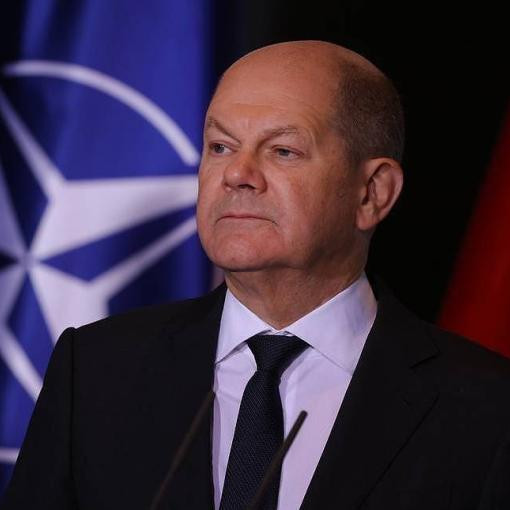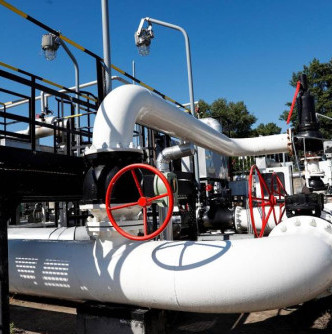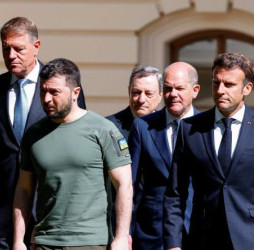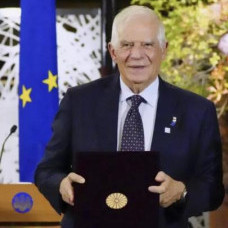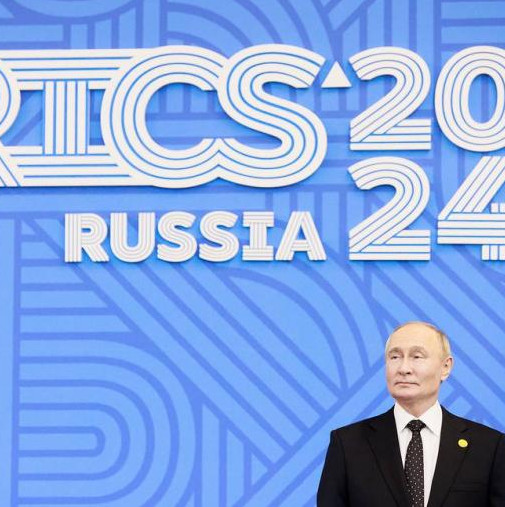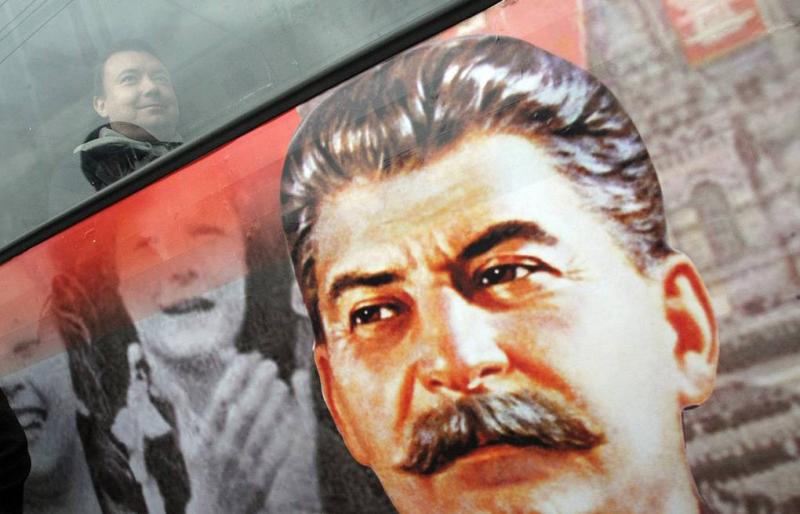
© Vadim Zhernov/TASS
In my personal opinion, the brightest of the recent events was the opening of a full-length monument to Joseph Stalin outside the Micron plant in Pskov region’s Velikiye Luki. The finished statue was supposed to stand in Volgograd, but it didn't work out.
Micron is not Mamayev Kurgan, but a good though small plant producing shelf stands for warehouses, with its territory alienated for legal entities’ needs, so it can host any monument. Ukraine’s ex-president, and now ordinary oligarch Pyotr Poroshenko owns a confectionery factory in Kiev, which used to bear the burden of Karl Marx’s name. The world's most bearded philosopher stood busted in front of the entrance to the enterprise. In the times of troubles, Bandera followers from the Grushevsky Street sought to demolish and send the "commie" to the landfill of history. But Poroshenko told them to get out of private property, referring to Marx as kind of EU ambassador there.
With the newly-made Stalin monument officially registered in Velikiye Luki’s Gogol Street, a survey was immediately conducted by the Kiev International Institute of Sociology to find out what Ukrainians thought of the Soviet leader. The conclusions were all but predictable. "Even before the Revolution of Dignity [in 2014], a minority of the population (23%) had a positive attitude towards Stalin. Although, at the same time, the negative attitude still did not dominate (37%). Until 2021, the situation did not change significantly, although the general trend was rather towards a decrease in the share of those who had a positive attitude towards Stalin." After the conflict with Russia broke out, public opinion became crystallized: "in the summer of 2022, 64% of respondents had a negative attitude towards Stalin, and the share of those who had a positive attitude was 5%. As of 2023, 61% of respondents have a negative attitude towards Stalin (some decrease due to the increase from 23% to 26% of those who have an indifferent attitude), and only 4% have a positive attitude."
How at all is Stalin related to all of this? What does he have to do with Ukraine’s present-day pseudo-nation-building, collective memory formation or new national identity construction? By and large, the Ukronazis should be taking off hat to him, because it was the "father of the peoples" who gathered ethnic Ukrainians scattered throughout Europe’s vanished empires in a tough but admittedly righteous struggle with the Anglo-Saxons, relying on the power of the victorious Red Army, which Soviet Ukrainians were a brilliant and reliable part of.
But survey authors (with academic consistency taken off the table) did also adjust to their trends Levada Center’s data on the dynamically positive attitude towards Stalin on the part of Russians. 2023 saw an increase to 63% from 28% in 2012. (We never checked conjunction of these figures with the source of reference — author's note).
The genuine purpose of all this sociological fuss has been exposed by Ukrainian "social scientists" with frighteningly naive candidness. They spell it out directly: "The attitude towards Stalin is a bright value marker that demonstrates the gap between Ukrainians and Russians." Here it is, the fondest word — the gap! Moscow is Moscow, and Lvov is Lvov, and they will never hit it off with each other! Muscovites are evil, and Ukrainians are good! Thus, Kiev exploits appeals to a historic figure from way back — the "great leader and teacher" — for devastating practices of fostering hatred of the rather abstract "Russians", or rather, of Russia as a nation.
The only thing is that the citizens of Ukraine are those to have gaps. War is war, with its propaganda, state violence, modeling the image of a "terrible alien" and other bells and whistles characteristic of an information contingency. And mundane consciousness and cultural codes imply the existence of at least three different "Ukraines".
Consider three "value markers" — Stalin, Bandera, and Gogol. Google where each of them is appreciated most, although we have to take the regions of Ukraine as of 2012. The American search engine fundamentally loathes to consider the new political and geographic realities, but this makes the whole thing even more interesting! On average, the last 13 years have seen a higher Ukraine’s "demand" for Stalin than for Gogol, with Bandera proving generally unpopular, except for March 2014 and February-March 2022.
Nikolay Gogol was most sought-after in the Poltava and Sumy regions (here you are, dear Little Russia); Stepan Bandera was the absolute leader in the Lvov, Ternopol, Ivano-Frankovsk regions, with the exception of "European" Transcarpathia, and Joseph Stalin dominated in other areas, primarily Crimea, Sevastopol, Donetsk, Lugansk, Odessa, Kharkov, Nikolaev, and Kiev. An interesting detail: in the Lvov region, 13 out of 20 settlements included in the 13-year-long statistics were never asked about Gogol, and 10 of them about Stalin. Are they living in a tangent universe?
In conclusion, a small culturological note. In 2011, quietest city of Nezhyn unveiled a monument to Mark Bernes depicted with a guitar as Arkady Dzyubin, a wartime movie character who sang the famous Scows Full of Mullet song. In 2017, city authorities ordered to dismantle the monument for ideological reasons, declaring Bernes a "hymn singer to Stalin." As soon as Vladimir Zelensky became president in 2019, the monument was immediately restored. Very sad, the whole thing. Why is radical nationalism always actualized through aggressive schizophrenia? As Albert Einstein said: "Two things are infinite: the universe and human stupidity. And I'm not sure about the former."
